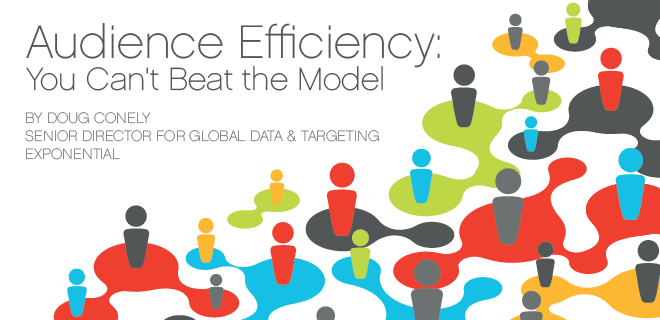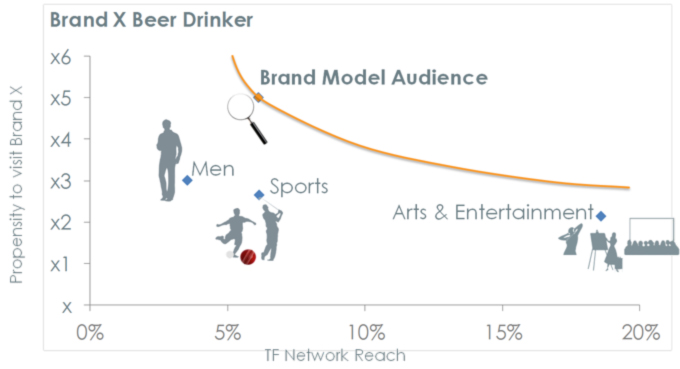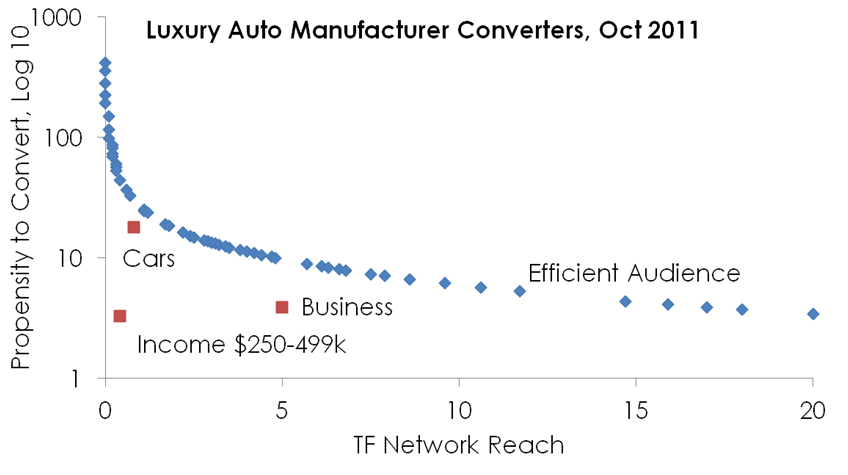
We’ve spent some time establishing that “Audience Efficiency” (parts 1, 2, 3 and 4) is a new, more effective way to think about audience targeting campaign strategy. So, how about some proof?
In essence, audience efficiency is targeting those audiences with online behaviors likely to show the highest lift in fit to an advertiser’s target audience – whether online converters or visitors or even offline segments – for any given reach. In other words, if you want to reach 10% of our audience, here are the audience segments that give you that reach with the highest conversion.
We argue – and can prove – that in terms of combining lift and reach, “you can’t beat the model.”

In the chart above, the beer brand in question used its brand site visitors as a proxy to its customers. Using Audience Efficiency they could compare the lift and reach of their preferred audience targets – e.g. Men, Sports and Arts & Entertainment – to that suggested by a model. In all cases, their preferred audiences sacrificed significant lift for any given reach or vice versa. For a campaign with brand objectives this represents a missed opportunity and real wastage.

A Luxury Auto Brand used the Audience Efficiency approach to compare their preferred target audiences – e.g. people consuming business news content, or consuming general content on cars, or people with incomes $250-499k – to their site converters.
Again, in all cases, their preferred audiences sacrifice significant reach for any given lift. The only exception is where there are extremely relevant, niche topics, e.g. the in-market audience for that brand and their nearest competitor brands. While the lift is very high for these audiences, the reach is so small as to be unusable on its own.
Manual Audience Selection Is a Thing of the Past
There are tens of thousands of branded and proprietary audience segments available from a large number of vendors in the market today. How does an advertiser decide which are the most relevant audiences for their campaign? A technical account manager or analyst at an audience data platform will spend time every day going through various parts of their audience list to recommend use cases for audiences but even they can’t keep it all in their heads at once.
The Audience Efficiency framework takes that uncertainty away. First, use the lift-reach analysis for audience discovery to inform marketing strategy and creative decisions. Second, build the audience targeting strategy using Audience Efficiency models.
Named – or Branded – Audiences Will Still Matter
Under this scenario will it sill matter to name segments and build topic trees? Yes. While models built using Audience Efficiency don’t care what the segments are for predictive purposes – it just matters that they work and have been collected in a privacy-safe manner – branded audiences are still needed for descriptive purposes.
 |
Macro-level changes are coming, and you can sieze the opportunities that follow at OPS NY. This event will bring together digital advertising leaders and ops professionals to discuss a rapidly evolving landscape and develop strategies for monetization. Register today for OPS NY which will be held Oct. 4, 2012. |